Athletes who want to learn how to run the 400m faster are gutsy because running the open 400m can be one of the most challenging events to race in track and field. Combine the 400m with four athletes, a baton, and a heated rivalry, and now you have one of the most exciting events to race or watch. Either way, in the open 400m or the mile relay (4X400m), the track athlete has to have a great combination of power, acceleration, speed, and long speed endurance in order to be successful in this event. However, there is more to learning how to run the 400m than you may think.
Most long sprinters are not aware of the proper way to run the 400m and some even try running the 400 all out with a 100% effort from start to finish. This isn’t a bad place to start because you can tell that this type of athlete is very determined to race the entire 400m because as we all know, it is a sprint event. Now all we need to do is get this athlete to understand how to run the different phases of the 400m faster and they will be able to maximize their potential as a 400m specialist.
Understanding the 400m
The 400m can be known as the dreaded long sprint race that nobody wants to run, but generally speaking it isn’t that much different than the 200m with the exception of speed endurance. Like the 200m, the 400m race has a drive phase or acceleration out of the starting blocks. After the 400m runner has accelerated out of the starting blocks, they will try to reach and then maintain a near maximum race velocity. However, the greatest challenge in the 400m is not only fine tuning the energy system training, but teaching athletes how to actually race the 400m faster so they can be successful beyond 200m-300m.
The importance of the 400m Start
Before any athlete learns how to run the 400m faster, it is important that they understand the value of the start and the acceleration in their race. Young 400m athletes will tend to run the 400m with the idea that they should start out slow and progressively build their speed over the duration of the 400m.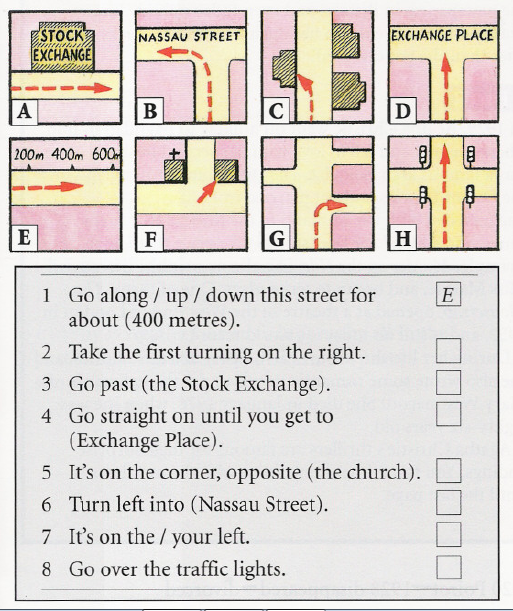 Don’t do this. If a 400m runner goes out too slow from the start, they will not be able to utilize a key energy system that allows for a 6-7 second window where no lactic acid and hydrogen ions will be produced. This happens to be the first 6-7 seconds of any maximal effort, which ends up being the first 6-7 seconds of the 400m race. If anything, use this opportunity to your advantage and power out of the blocks like a lean, mean, 400m racing machine.
Don’t do this. If a 400m runner goes out too slow from the start, they will not be able to utilize a key energy system that allows for a 6-7 second window where no lactic acid and hydrogen ions will be produced. This happens to be the first 6-7 seconds of any maximal effort, which ends up being the first 6-7 seconds of the 400m race. If anything, use this opportunity to your advantage and power out of the blocks like a lean, mean, 400m racing machine.
How to run the 400m
Acceleration
In the 400m, the athlete will get into the starting blocks after the starting official has given them the verbal cue of “on your marks”. After the starting official has given the verbal cue “set” and fired the starting pistol, the 400m runner will accelerate into the curve out of the blocks and try to reach near their maximum race velocity.
The acceleration to near maximum race velocity zone will range between 50-70m (depending on the athlete) and then transition into the cruise control phase of their 400m.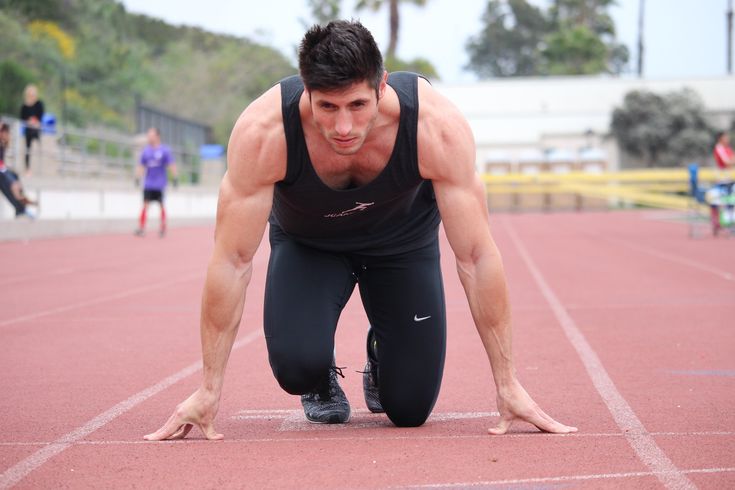
Cruise control
The next phase of the 400m is the relaxed arm phase or cruise control phase (80-130m in length). This is when the 400m runner continues to maintain the same arm and leg turnover as they did in the first 50-70m, but the range of motion (ROM) of the arm form is decreased as the goal here is to conserve arm energy. What this means is the 400m runner does not need to pump the arms as aggressive and as far (ROM) because the arms will become very important later in the race.
It is very important that the 400m runner does not show any visual signs of slowing down during this phase. The idea is to maintain race velocity, not jog/slow down. This cruise control phase can range anywhere between 100-150m.
The 200m
Once the 400m runner has reached the 200m, they should arrive around 1-2 seconds slower than their personal best 200m time. So for example, if a 400m runner is capable of running the 200m in 21. 5 seconds, they should hit the first 200m in their 400m race at 22.5-23.5 seconds (1-2 seconds slower).
5 seconds, they should hit the first 200m in their 400m race at 22.5-23.5 seconds (1-2 seconds slower).
Building the arm form back to 100%
When the 400m runner is around the 200m, they will go through a “building” phase (feels like re-accelerating) where they incorporate more energy toward their arms again with a progressive increase in range of motion and energy output over the next 20-50m. If we were to compare both the cruise control phase and “building” phase to driving a car, it would go something like this.
Imagine that you have the cruise control set for 51mph (cruise control phase) while following a car but there is too much oncoming traffic for you to pass. You see a passing lane up ahead and when the opportunity arises, you gradually push on the accelerator (building phase). This is what the transition into the building phase is going to feel like as you incorporate more energy to your upper body.
All out!
Here is the important part where the arms come back into play. As the 400m runner builds the arm form back up after the cruise phase, they will go all-out with a little more than 150m to go to the finish. This is like pushing the accelerator to the floor in a car. Out of shape 400m runners will most likely wait to go all-out when they are closer to 120m to go to the finish.
As the 400m runner builds the arm form back up after the cruise phase, they will go all-out with a little more than 150m to go to the finish. This is like pushing the accelerator to the floor in a car. Out of shape 400m runners will most likely wait to go all-out when they are closer to 120m to go to the finish.
During this last and final push for the finish line, you really won’t see a visual increase in the 400m athlete’s pace. If there is a significant increase in the athlete’s speed, then there is a good chance that the athlete ran the first 250m way too slow and saved their energy for the last 100m-150m.
Remember the analogy used earlier about driving a car…
In the all-out phase (150m to go), imagine that you are back in that passing lane and you have gradually pushed on the accelerator to pass (building phase). The only problem is that the jerk in the other lane decided he wants to drive fast when there is a passing lane. Also, it’s not a very long passing lane, so you have to pass quickly. You begin to floor it. This is what it is going to be like when you have about 150m to go to the finish.
You begin to floor it. This is what it is going to be like when you have about 150m to go to the finish.
“Lift”
Now that the 400m runner is going all-out and driving hard out of the curve to the finish straight, they will eventually need to use their arms to help create what most coaches refer to as “lift”. As the 400m runner gets closer to the finish line, they will have a little more emphasis in driving their arms upward. In order to create “lift”, they will drive their arms upward in an aggressive manner and keep the same range of motion as they would in any all-out sprint.
The reason the 400m runner wants to try to create “lift” is because by now the legs are very tired and need all the help they can get from the arms. It is important that the 400m runner does not over emphasize in increasing the arms range of motion beyond normal sprinting form. Remember, it’s not the range of motion we are trying to increase; it’s the emphasis on the upward drive within the arm form.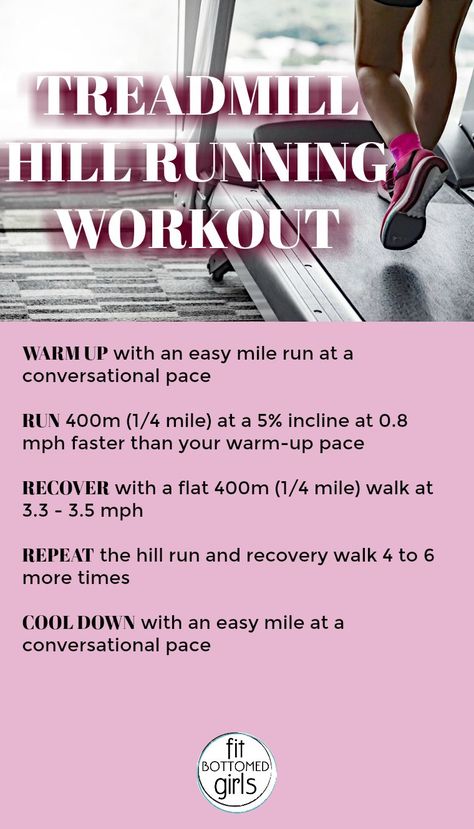 In other words, we are trying to create “lift”, not overly exaggerated and sloppy “uppercut” arms.
In other words, we are trying to create “lift”, not overly exaggerated and sloppy “uppercut” arms.
Finish line
As the 400m runner approaches the finish line, they will need to make sure they keep driving and that they lean across the line. It is all too common for young athletes to run the 400m and then slow down the last 2m-5m before the finish line. Slowing down just before the line will compromise valuable time and could mean the difference between a school record or even a state championship.
Putting the phases of the 400m together
Now that you have an idea of how to run the 400m faster, you will need to learn how to perfect it. When you run the 400m, each phase has a different range that can be tweaked as you gain more experience and as your skill and fitness level improve. Learning how to run the 400m in a race is going to take time and will not happen overnight. In fact, learning how to run the perfect 400m could take an entire season if not multiple seasons.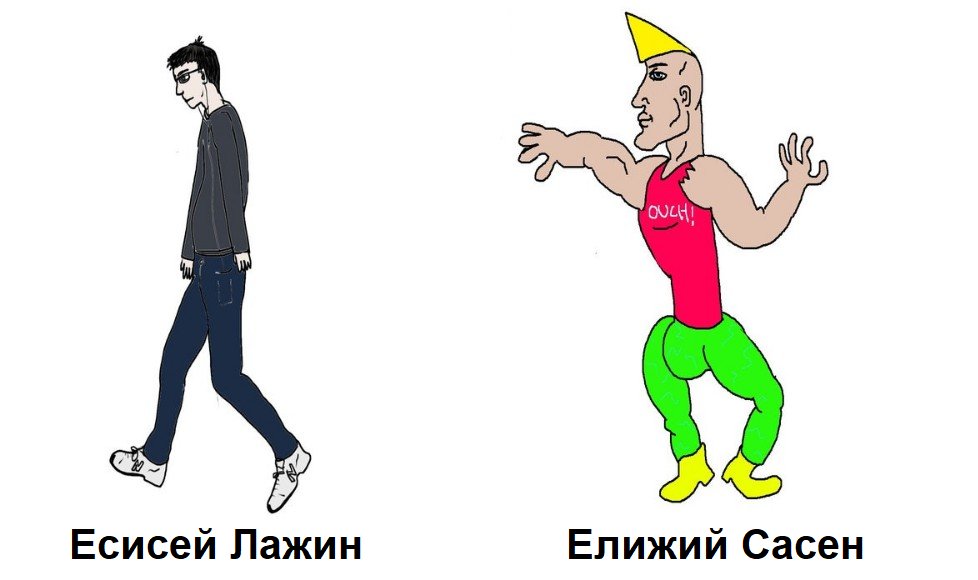 Don’t be discouraged if you don’t figure it out your first time. It takes practice and patience to really find the perfect ranges that compliment your 400m potential.
Don’t be discouraged if you don’t figure it out your first time. It takes practice and patience to really find the perfect ranges that compliment your 400m potential.
The 400m is a tough race, so training for it is pretty rigorous. However, many athletes make it harder on themselves because their training lacks an indispensable element.
A race strategy is critical to effective training, and it should shape your overall preparation. Design your training program to provide a basis of consistency from which you can make real improvements.
Below are six phases of the 400m race and a strategy for getting each one right. The phases have been selected because track markings or visual cues are easy to work with, but as you become more experienced, you will be able to vary this either way.
Start to 50mThe start and the drive phase should be executed the same for any sprint: “go ugly early,” to coin a phrase.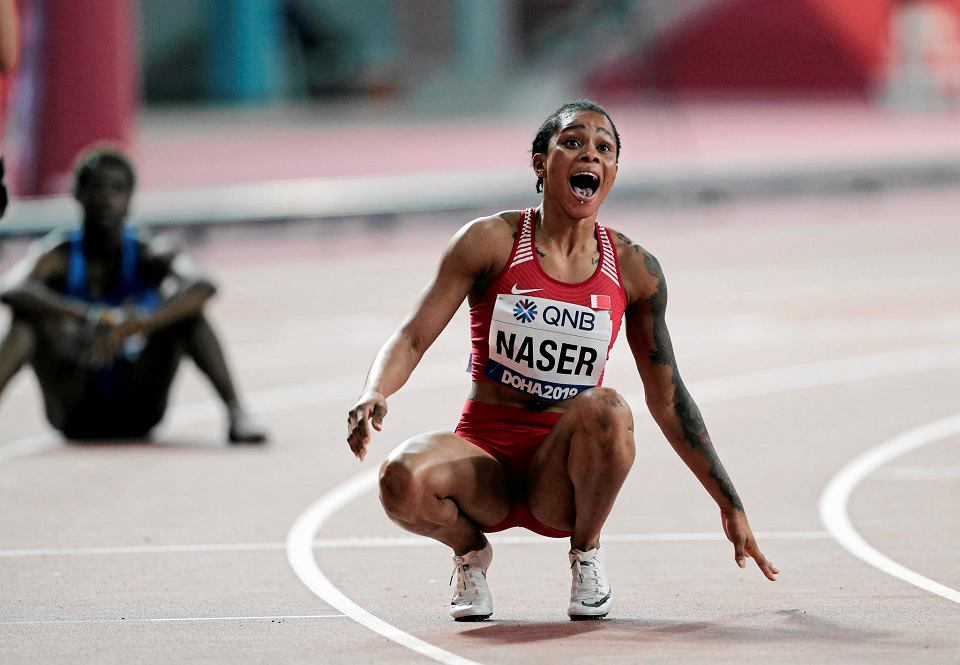 The reason to drive hard and not hold back at the start is that you are using your alactic energy system, and since it burns out pretty quickly (in roughly seven or eight seconds), you might as well take maximum advantage of it. Holding back will not stop it from burning out. Also, acceleration is technically difficult, especially in sprinting, and if you try to pull back to 95% of your maximum speed, for example, who can judge that? Save your adjustments for the next phase.
The reason to drive hard and not hold back at the start is that you are using your alactic energy system, and since it burns out pretty quickly (in roughly seven or eight seconds), you might as well take maximum advantage of it. Holding back will not stop it from burning out. Also, acceleration is technically difficult, especially in sprinting, and if you try to pull back to 95% of your maximum speed, for example, who can judge that? Save your adjustments for the next phase.
The next 50m constitute the transition phase. You are coming off the bend and getting into your stride, and this is where you set the pace and cadence for the next stage.
FloatYou can’t run a 400m flat out all the way around. Those who try will blow up at around 250m and start going backward. Getting the float phase absolutely right is the most important strategy in the race because it covers the 100m to 200m sections. If you go too slowly, you’ll lose too much time, but if you go too fast, you’ll flame out. It’s like Goldilocks’ porridge—not too hot, not too cold, just right. Latif Thomas calls it running “at the edge of insanity.” You need to be fast but relaxed.
It’s like Goldilocks’ porridge—not too hot, not too cold, just right. Latif Thomas calls it running “at the edge of insanity.” You need to be fast but relaxed.
This is not real acceleration, nor is it even re-acceleration, but it will feel like it. (Read Five Methods to Maximize Acceleration.) Here, you should start to wind up the speed over the course of the bend. Actually, what happens is that you slow the rate of deceleration; but it will feel like you are accelerating because you will be pushing instead of floating. The trick is to increase speed gradually through the course of the bend. Don’t try to kick at the 200m point, as this will waste considerable energy.
KickThis phase varies depending on the athlete and the race situation. But in general terms, I like my athletes to accelerate off the bend and start their kick at the 100m marker. (See How Texas T&F Improves Their Kick.) This is because if they accelerate at this point, they’ll be pushing as they straighten up off the bend.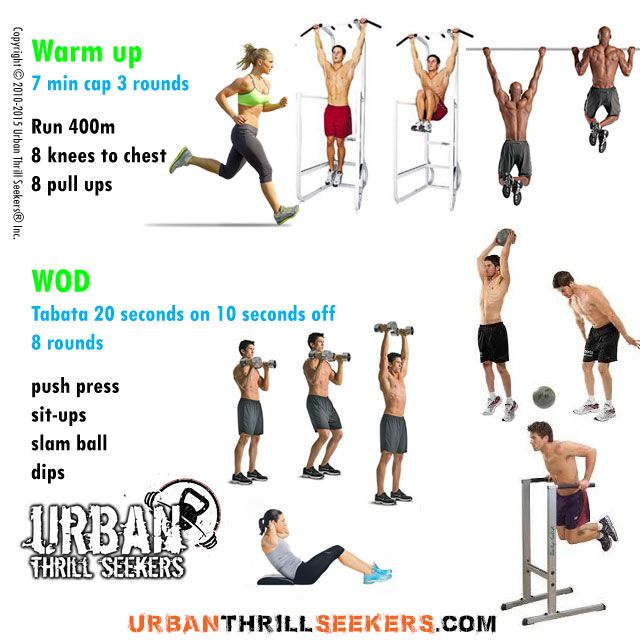 It feels like this gives you an extra shot of speed, and you get the jump on competitors who straighten up first before kicking. This can be a particularly good time to use the Valsalva technique.
It feels like this gives you an extra shot of speed, and you get the jump on competitors who straighten up first before kicking. This can be a particularly good time to use the Valsalva technique.
This is where things can start to get messy, especially if you didn’t get the other phases right. However, no matter what went down previously, the final phase is hell on earth. Sprinting when your body is racked with lactic pain and screaming at you to stop is difficult to say the least. Each athlete has to find his or her own way through it, but believe it or not, the best way is to run faster. It’s obviously counterintuitive, but continuing the kick changes the reaction of the body for a short time after the first 300m. It also provides a psychological edge, bringing the finish line toward you faster, so the race will be over sooner. But be assured, these mental tricks have no more than marginal effects. It will hurt. There is no way around it.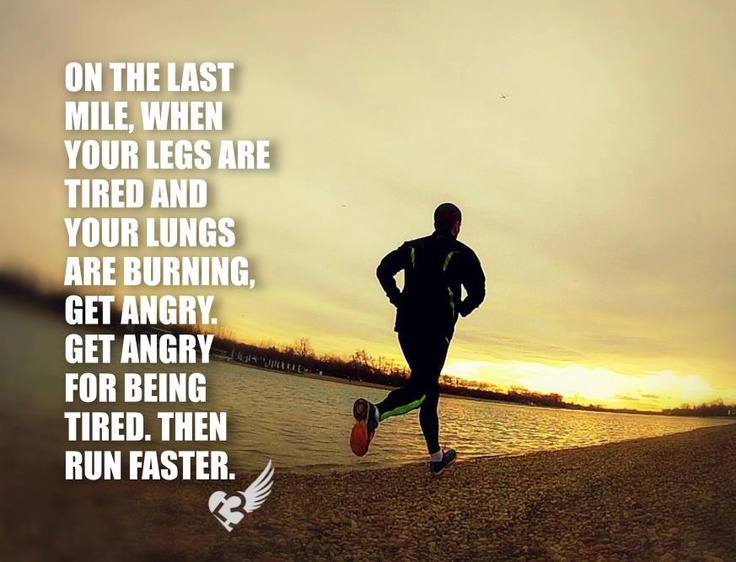
For more 400m training advice, check out A Faster 400 With Baylor Track.
The 400m is a tough race, so training for it is pretty rigorous. However, many athletes make it harder on themselves because their training lacks an indispensable element.
A race strategy is critical to effective training, and it should shape your overall preparation. Design your training program to provide a basis of consistency from which you can make real improvements.
Below are six phases of the 400m race and a strategy for getting each one right. The phases have been selected because track markings or visual cues are easy to work with, but as you become more experienced, you will be able to vary this either way.
Start to 50mThe start and the drive phase should be executed the same for any sprint: “go ugly early,” to coin a phrase. The reason to drive hard and not hold back at the start is that you are using your alactic energy system, and since it burns out pretty quickly (in roughly seven or eight seconds), you might as well take maximum advantage of it.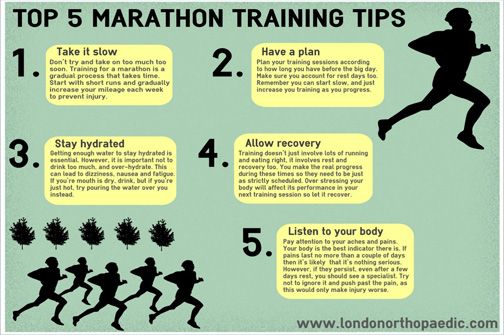 Holding back will not stop it from burning out. Also, acceleration is technically difficult, especially in sprinting, and if you try to pull back to 95% of your maximum speed, for example, who can judge that? Save your adjustments for the next phase.
Holding back will not stop it from burning out. Also, acceleration is technically difficult, especially in sprinting, and if you try to pull back to 95% of your maximum speed, for example, who can judge that? Save your adjustments for the next phase.
The next 50m constitute the transition phase. You are coming off the bend and getting into your stride, and this is where you set the pace and cadence for the next stage.
FloatYou can’t run a 400m flat out all the way around. Those who try will blow up at around 250m and start going backward. Getting the float phase absolutely right is the most important strategy in the race because it covers the 100m to 200m sections. If you go too slowly, you’ll lose too much time, but if you go too fast, you’ll flame out. It’s like Goldilocks’ porridge—not too hot, not too cold, just right. Latif Thomas calls it running “at the edge of insanity.” You need to be fast but relaxed.
AccelerationThis is not real acceleration, nor is it even re-acceleration, but it will feel like it.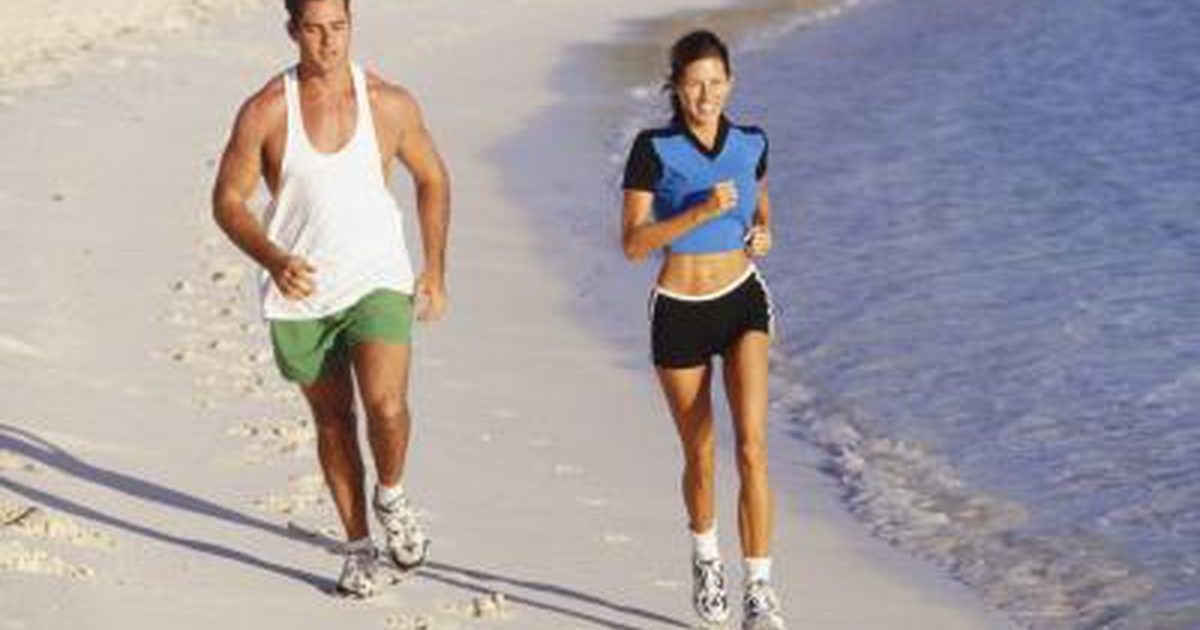 (Read Five Methods to Maximize Acceleration.) Here, you should start to wind up the speed over the course of the bend. Actually, what happens is that you slow the rate of deceleration; but it will feel like you are accelerating because you will be pushing instead of floating. The trick is to increase speed gradually through the course of the bend. Don’t try to kick at the 200m point, as this will waste considerable energy.
(Read Five Methods to Maximize Acceleration.) Here, you should start to wind up the speed over the course of the bend. Actually, what happens is that you slow the rate of deceleration; but it will feel like you are accelerating because you will be pushing instead of floating. The trick is to increase speed gradually through the course of the bend. Don’t try to kick at the 200m point, as this will waste considerable energy.
This phase varies depending on the athlete and the race situation. But in general terms, I like my athletes to accelerate off the bend and start their kick at the 100m marker. (See How Texas T&F Improves Their Kick.) This is because if they accelerate at this point, they’ll be pushing as they straighten up off the bend. It feels like this gives you an extra shot of speed, and you get the jump on competitors who straighten up first before kicking. This can be a particularly good time to use the Valsalva technique.
The Final PhaseThis is where things can start to get messy, especially if you didn’t get the other phases right.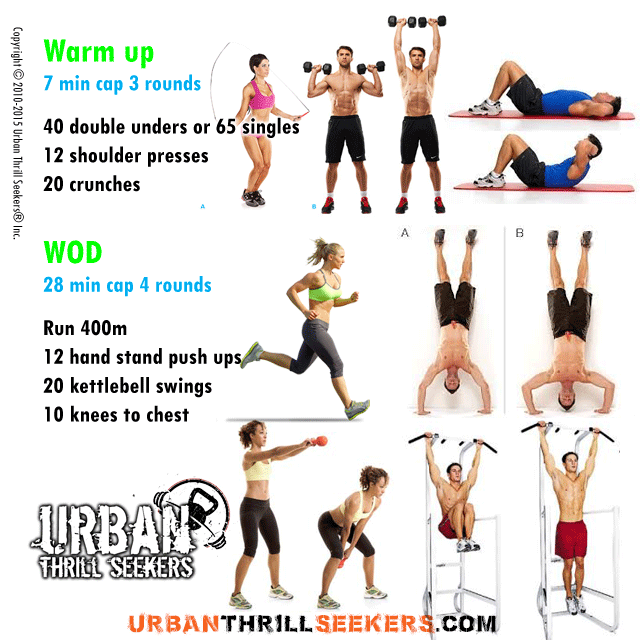 However, no matter what went down previously, the final phase is hell on earth. Sprinting when your body is racked with lactic pain and screaming at you to stop is difficult to say the least. Each athlete has to find his or her own way through it, but believe it or not, the best way is to run faster. It’s obviously counterintuitive, but continuing the kick changes the reaction of the body for a short time after the first 300m. It also provides a psychological edge, bringing the finish line toward you faster, so the race will be over sooner. But be assured, these mental tricks have no more than marginal effects. It will hurt. There is no way around it.
However, no matter what went down previously, the final phase is hell on earth. Sprinting when your body is racked with lactic pain and screaming at you to stop is difficult to say the least. Each athlete has to find his or her own way through it, but believe it or not, the best way is to run faster. It’s obviously counterintuitive, but continuing the kick changes the reaction of the body for a short time after the first 300m. It also provides a psychological edge, bringing the finish line toward you faster, so the race will be over sooner. But be assured, these mental tricks have no more than marginal effects. It will hurt. There is no way around it.
For more 400m training advice, check out A Faster 400 With Baylor Track.
Running 400 meters - sprint distance in track and field athletics. For such a long sprint, the athlete must have an excellent combination of power, speed and endurance, which is why this distance is held in high esteem among sprinters.
In this new article in the running series, we cover the 400m from A to Z.
Now the distance of 400 m is unified all over the world, but it was not always so. Previously, in many countries, in particular in the USA, athletes covered a distance of 402.336 m, which is equal to 440 yards or a quarter of a mile, while the traditional 400 m is 437.445 yards.
The Olympic history of the 400m dates back to 1896. It was then that this discipline appeared in the men's program of the Games. Women, on the other hand, could not compete at such a distance until 1964.
If you look at the list of the best male 400m sprinters in the history of running, it becomes clear without counting that the American school of running dominates here. But in the women's ranking, everything is not so simple: the representatives of Russia, the USA, the GDR and the FRG (in the past) share the glory among themselves.
The men's Olympic record has been 43.03 seconds since 2016 and the women's 48.25 since 1996. But in the first Olympics for four hundred meters, the results were much slower, especially for men. In 1896, American Thomas Burke won gold with a finish time of 54.2 s.
After 4 years, men are faster: US runner Maxi Long sets a new Olympic record in the first race - 50.4 s. And already in the final, he improved his own record by a whole second, running in 49.4 s.
The first women's 400m Olympics in 1964 was faster than the first men's in 1896. Betty Cuthbert, an Australian sprinter, won gold by running the final in 52 seconds against the then world record of 51.9 seconds (1962).
For the first time, women will overcome the 50-second milestone at the Games at 1976 year. The author of a new world record and the first Olympic was the Polish athlete Irena Szewinska - 49.28 s (two years earlier, she also set the first world record of 50 s - 49.9).
Read also: Types and disciplines of athletics
Open stadium
 60 s games, Moscow, USSR)
60 s games, Moscow, USSR) Room
Other Track and Field Norms
During the summer season, the 400m is held in a stadium of exactly the same length, so athletes need to run one lap . In winter, two laps are usually run in a 200 m arena.
At the stadium, each athlete moves and finishes on his lane, but indoors after the first lap, all participants move to the same lane, so it is very important to win the first 200 m, which is why the first half of the distance is most often 1-2 seconds faster second.
The 400m uses the starting blocks needed for a powerful start at the start of a race. When the race is about to start, the runner must stand in their starting blocks and wait for the gun to fire, and then start running.
False start, i.e. starting before the pistol fires, means disqualification.
With a large number of participants, the competition is held in several rounds and includes preliminary heats, quarter-finals, semi-finals and, in fact, the finals.
This means that athletes must be ready to run several times 400 m in one day without wasting all their energy until the final race.
Van Niekerk sets the world record in the 400m at the Rio 2016 Olympics
An important point: even if before the final one of the participants showed a time better than what will become victorious in the final, the winner is still determined by the results of the final, regardless of past results.
How to run this long sprint race? Start slowly or from the very beginning develop maximum speed? Here we will tell you about the stages of the perfect 400-meter race.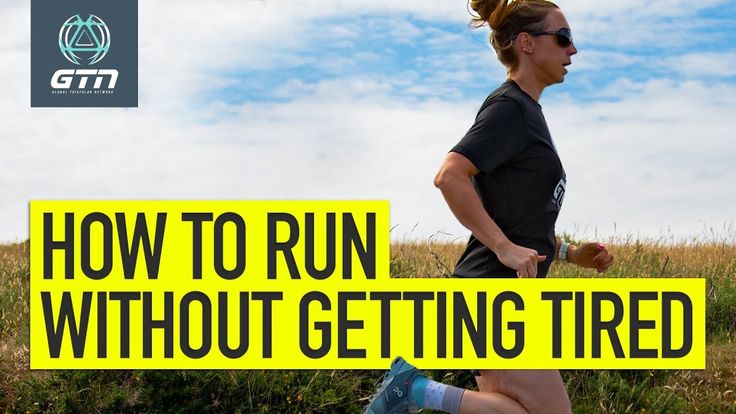
Although this is a sprint that requires endurance, a quick start is very important here. If a 400m runner starts too slowly, he will not be able to use the 6-7 second window that does not produce lactic acid and hydrogen ions.
This is about the first 50 meters after leaving the starting blocks. In those few seconds, the runner is moving at full speed with the head down and the body bent, which helps to achieve maximum speed.
In the next 50 m, the runner is upright and comes out at his racing pace. You need to run smoothly, relaxing the upper shoulder girdle.
Keep the rhythm for the next 100m, reaching the half mark. If in class you practiced running along a turn, you should not experience a loss of speed when passing it.
The 200m marks in a 400m competition must be reached about 1-2 seconds slower than their 200m best. For example, if a 400m runner is able to run the 200m in 21.5 200 m in a 400 m run in 22.5–23.5 seconds.
Run fast but relaxed. In other words, roll on.
In other words, roll on.
It is believed that the third 100 m is decisive in the race. In this phase of the race, you reach the second turn, where you begin to pick up speed and turn on the active work of the hands.
Go all out with just over 150 meters left to go. However, during this last push, there will be no visible increase in pace.
If there is a significant increase in speed, this indicates that the athlete ran the first 250 m too slowly and saved his energy in the last 100-150 m. . And the best way to get rid of it is to just run faster. Relax your shoulders and jaws, there is no point in wasting energy on tension.
Inexperienced athletes often slow down the last 2-5m before the finish line, which wastes valuable time and can make a big difference, because sprinting is sub-second precision.
Women's 400m sprint at the Doha 2019 World Championships
Sprinters run in spikes - special hard shoes with spikes on the sole. But, as usual, there should be different shoes for different disciplines. Since 400m is a long sprint, spikes are not the same as for 100m runners.
But, as usual, there should be different shoes for different disciplines. Since 400m is a long sprint, spikes are not the same as for 100m runners.
They have a thicker heel and a less rigid sole. In the 400-meter sprint, athletes run two turns, which also affects the structure of their shoes: they need more serious grip.
Here are some of the models that have proven to be the best:
Run shorter races like 100m and 200m as training. They will allow you to work even faster. Don't ignore the 600m and 800m starts, which will develop your endurance.
Longer distances are less useful because the emphasis is on aerobic endurance, while 400m is completely anaerobic work. To be successful in the 400m, training must be built around sprinting and developing speed endurance.
It is important to visit the gym and perform jumping exercises to improve strength skills.
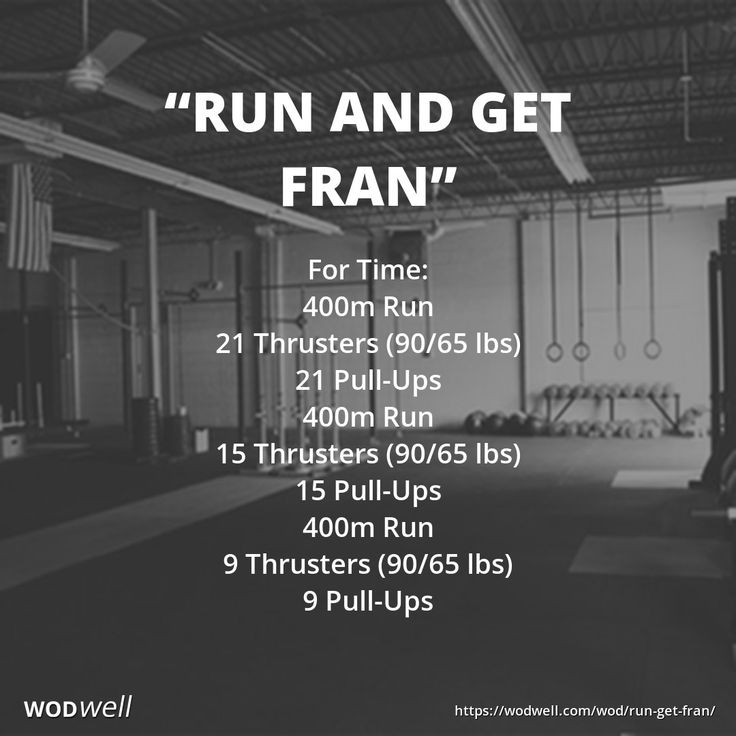
1.5-2 weeks before the decisive race, exclude strength and jump work from the plan. The rest of the time just run and keep your muscles toned with a couple of fast 100-200m runs.
Can you predict the outcome? Yes, the formula for calculating potential results in the 400m run is as follows: take the best result for 200m, multiply by two, and add another 3.5 seconds to the result.
The 400m is considered a subspecialty among runners. Often sprinters combine 100 and 200 m, intermediates - 800 and 1500 m, but those who chose 400 m usually run only this distance. This is because sprinting qualities, the ability to distribute forces, and speed endurance must work for success.
This is because sprinting qualities, the ability to distribute forces, and speed endurance must work for success.
Stephen Gardiner wins gold in the 400m at the Doha World Championships 2019
Race strategy is critical for this distance and should shape overall preparation.
Read on the topic: Sprinting and its features
Share with friends:
At the competitions in Rieti, Valery took second place after the runner from the GDR Hans-Jörg Künze (13:10.40), and only one more person was running faster by this moment - the American world record holder Henry Rono - 13. 08.4.
08.4.
The average result of 10 starts of Abramov at 5000 m is 13.21.37, he ran out of 13.20 three times, 12 times - out of 13.30. Valery's personal records are also high at medium distances: 800 m - 1.47.9 (79), 1000 m - 2.18.4 (78), 1500 m - 3.36.80 (81), 3000 m - 7.46.80 (83).
Valery Abramov passed away on September 14, 2016. His trainer Leonid Nikolaevich Belyaev tells about his best student.
- What is the difference between current stayers and Abramov?
- I simply don't see people like Valery Abramov in relation to sports, to competitions. He had extraordinary dedication, he did not spare himself in running. And the responsibility for the country? He could perform poorly at home in the selection, but when he traveled abroad and played for the team, he gave all the best. Such people are rare. Valery could run when, according to the laws of physiology, he should have stopped.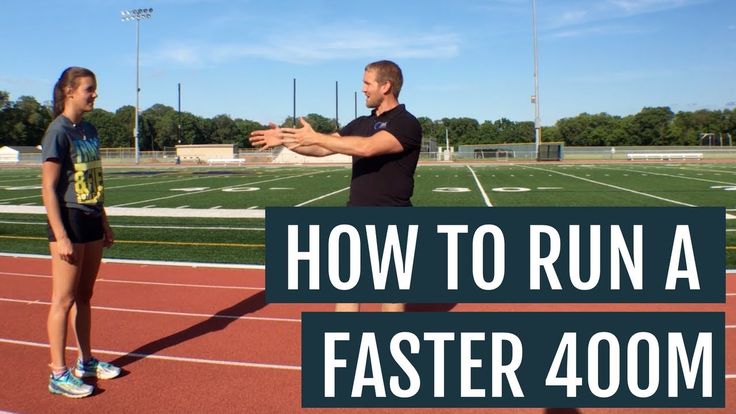 His psyche was stronger than his internal organs.
His psyche was stronger than his internal organs.
- In training, did you have to force him, say, to finish some work?
- In training, I never set the goal of working to the maximum, we left that for the competition. I did not want to wear out a person with overloads. Training should go only in development.
I can remember, perhaps, only one time, when during a hill training in April 1981 I had to ask him to complete this training.
I tried to ensure that he had no weak points. Look at Valery's range of competitive distances - from 800 to 10,000 m. By the way, in the 4x400 m relay at 19In 76, he ran for 48.8. And at the European Cup-81 in the 5000 m race, Abramov and Moorcroft ran the last lap in 52.5.
It is my deep conviction that without a good 1500m result there can't be a good 5000m. I think that our current 1500m record holder Vyacheslav Shabunin could easily run 5000m in 13 minutes.
- What did he lack?
- He had enough of everything, except for one thing - desire.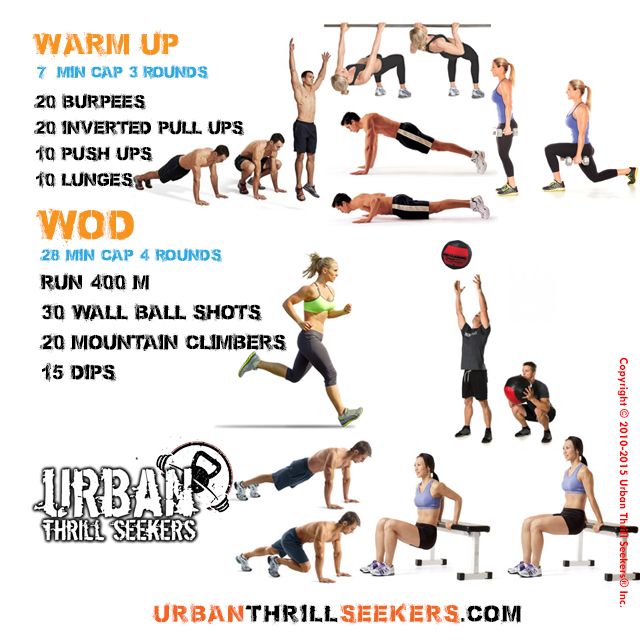 Running 3.5 laps or 12.5 laps on the track of the stadium - there is a difference. Although it is known that he ran a half marathon more than once in 1:02.
Running 3.5 laps or 12.5 laps on the track of the stadium - there is a difference. Although it is known that he ran a half marathon more than once in 1:02.
- Valery was not afraid to start at 5000 m ?
- This has never happened. After all, he had been skiing before. And at the age of 17 he ran up to 50 km in the taiga in boots. While still a middleweight, he ran 30 km in 1:42.
- Why, after skiing, did he first come to middle distances, and not to stayers?
- The stayer, in my opinion, should go through the middle running school. The stayers of his generation all came from medium distances. Therefore, they could switch over the distance, but now no one can do this.
- Let's remember the very beginning. How did you meet?
- I was a running teacher at the Arkhangelsk Pedagogical Institute at the sports department and saw him at the entrance exams. He ran the 1500m in 4.32, but it wasn't the result that struck me, it was his running high on the foot and the fast finish.
He ran the 1500m in 4.32, but it wasn't the result that struck me, it was his running high on the foot and the fast finish.
Having entered the institute, Valery skied for two more years, but I constantly met him in my classes. He decently played football, basketball, had high coordination - he performed any running exercise the first time. Admired his foot - he walked without touching the heel of the ground.
As a skier, he won a union cross country zone. When he was in his second year (it was 1975), there were not enough athletes for the May relay race, and I invited him to the 560 m stage, and a little later I persuaded him to perform on the track.
In the first competition, Valera showed 4.02 in the 1500m, and finished the season with a result of 3.49.4. But ... still stayed on skis. The following winter, on skis at a distance of 15 km, he took 17th place at the All-Russian Universiade among juniors, and at the All-Union - 30th. But in the summer he ran 1500 m in 3:43. 7 and finally switched to athletics.
- However, the runner, who just two years later became the national champion in the 1500m and won the Znamensky Brothers Memorial with a personal record of 3.37.4, you transferred to a distance of 5000m ...
- It turned out to be not so easy to do, and not because he didn't want to. In the 78th, an article was published by the Polish coach Zbigniew Zaremba, who derived the formula for the result at any distance, depending on the results at adjacent ones. For example, a 1500m time is twice the 800m time plus 2-3 seconds. When he ran the 800m in 1:47.9, which gives 3.36+3=3.39 (and ran like this without any addition), then in order to grow further, it was necessary to improve the result on 800 m to 1.45. Much more prospects, in my opinion, he had at 5000 m. sheet", for 29.05.6. And in 1978 he won the USSR-GDR-Poland match with a personal record of 13.43.2 (the last kilometer in 2.28).
But Ivan Fyodorovich Leonenko, the coach of the middle running team, did not let him go. I referred to the calculations and promised that with his speed at 1500 m he could show 13.08-13.12. Then the world record was 13.08.4, and Europe - 13.13.0. In the end, Boris Mikhailovich Fadeev, coach of the long distance running team, agreed to take Valery into the group.
- What has changed in his training that year?
- In the national team, he began to train with such strong stayers as the winners of the European Championship in the 10,000 m Alexander Antipov (27.31.52) and in the 5000 m Alexander Fedotkin 13.24.1), as well as the USSR record holder in the 5000m Ann Sellick (13:17.2). Although large volumes of running were not unusual for Valery (he had already gained 5900 km in a year and running 150-170 km in a week was the norm for him - in Bulgaria he somehow reached 220 km), at first he had a hard time. After all, Antipov ran even more (sometimes 1000 km per month) and faster. When I was not at the training camp, I told him: "Do the daytime workout with them, and do the evening workout alone. " After all, Antipov also ran very fast during the second training session.
- How fast?
- All the time from 4 minutes and often at 3.30, and this is at a distance of 12-14 km. A tempo run at an altitude of 1600 m for 10 km - for 31-31.30. It's very fast.
Valery survived that year and in the very first start, the fruits of his enormous work affected the result - 13:15.6. In fact, Antipov, who led the entire distance and himself showed 13:17.9, helped to run this way.
Valery's guys accepted, they became friends, and already the four stayers were very strong. They closed all official competitions, won almost all match meetings, as they were ready for any tactics. Could and lead the race, could play and finish.
In 1981 the record was born, largely as a consequence of the great work done by 1980. After all, we were preparing for the Olympics for the 10,000-meter run, which was wrong, we had to stay on the “five”, and the “ten” would have gone like that. And so, tired of the volumes, we returned to the previous 180 km per week, not striving for 250 km, but, of course, running faster. The volume came out in 1981 small - 5300 km, but there were many starts in winter and summer. Then there was no Grand Prix yet, and he performed at all competitions for the national team. And, as I said, the 1500m starts were especially helpful.
- Let's talk more about building a training year.
- We started in November and usually trained in Druskininkai. This is the perfect place to start the season for tempo runs. The work done gently led to the December gathering in Ashgabat, which, in turn, prepared for the middle mountains in January in Issyk-Kul.
February was only due to starts, in the best year of 1983 there were 13 of them. In winter, without special work, he showed good results.
Valera was twice third at the European Winter Championship and second once. And in March they went back to Ashgabat, they did almost the same thing as in December, only higher in intensity. Then in April we went to Kislovodsk, where we conducted special strength training. In May, we were preparing for the competitive season.
- Did you have a weekly microcycle?
- Approximate weekly cycle at the beginning of the season. Monday - tempo run, started from 8 km, Tuesday - auxiliary speed-strength training, Wednesday - again tempo, but slightly longer than on Monday - 10 km, Thursday - circuit training, Friday - again tempo (6 km). Saturday is a long run, Sunday is a recovery day. The length of the distance in the tempo run gradually increased (10-12-10 km). Then on Monday they did long stretches of 1-2 km, and on Friday the tempo “gathered” everything together.
The long run was started from 18-20 km and increased to 24 km, and it was also left in the summer. For 10,000 m runners, you need to run 30 km. I adhere to the formula developed by the Dutchman Van Aaken: the ratio of the main competitive distance to the distance in the long run is 1:3.
As a rule, three weeks of loading and a week of recovery. The load gradually increased. Usually the first week of a new cycle was equal to the third week of the previous one.
- And how fast did Valery run?
- The fact is that I always walked from the pulse, the speed of running was already a consequence. In tempo running - 160 beats / min, up to 170. This is the maximum, and then for those who have a high resting heart rate, for example, 50 beats per minute. For Valera - 160, since he has 36-38 at rest. In work on segments, the formula 180-120 is known (at the end of a segment and before the beginning of the next one). It seems to me that these are overestimated values, we adhered to such a ratio - 160-110. In the second workout - no more than 140-150. Moreover, it is especially important to follow this in Kislovodsk, where both the height and rough terrain. Biochemical analyzes showed that it is very easy to get into the mixed zone there, that is, to connect anaerobic sources that are not needed in this run.
If you follow your heart rate, then questions about how fast you need to run, how many segments and with what rest are removed by themselves. The body will tell you. If the pulse rises higher, then this is a signal about the end of the workout. Even from the first segment you can understand the state. Let's say he runs 1000 m in 3.15, and the pulse is 190 bpm, so something is wrong. Got sick or didn't recover.
But it is necessary to carry out control trainings as well, because you won't run at the competitions on the pulse of 160. Now it's good - there are competitions.
If there were no competitions, he gave 600-400-200-100 m, 3x400 m for 54 seconds with a rest of 3 minutes. Although this work is for 800 m, but you won’t win the 1500 m distance, and you won’t win the 5000 m if you don’t run fast 800 m. Such work gave a quick finish on the last kilometer.
I found one more work in the old "manual" - it was performed by the USSR record holder Ivan Belitsky (3:41. 0). These are 2 series of 4x400 m with a rest of 300, 200, 100 m between series.
When Valera came out at 3.40 he started in 60 seconds, then 59, 58, 57. The second series - 59-58-57-56. When I could start at 57 and finish at 55, I ran for 3.36. It's tough work. Because at a distance of 1500 m the most difficult is the third round, and here everything goes “on credit”. Thanks to the coach who came up with this, because I don't know who he is.
In general, experience shows that for working on special endurance, each distance has its own best segment. For 800 m - 300 m, for 1500 - 400, for 3000 - 800, for 5000 - 1000, for 10,000 m - 2000 m. And be sure to work on the pulse: 160-110 beats / min. But the last time he must run at full strength. If an average athlete runs 10x300 m for 40 seconds, then by 1.49can count.
- Now there are legends about your April training in Kislovodsk...
- I got the idea of this training from Lydiard. Jump work is given for an hour. Jumping uphill and running downhill on a segment from 200 to 800 m, acceleration 3x100 + 3x50 m on the plain - this is one series. At first they could complete 4 series, and by the end of the training camp - up to 6. Valery was the best in the group.
- How much did this mountain training give?
- The collected power potential was enough until August. When the competitions began, we limited ourselves only to special and jumping exercises.
- There were no injuries after such work, but from the point of view of today - it was not too much?
- We constantly monitored the state of the pulse. The guys from my group easily withstood such loads, because since November we have been doing running and jumping exercises.
- Which ones?
- The most common, those that teach running. We started with running with a high hip lift, then mincing running, running with straight legs, running with an overlap of the lower leg back, and then a unifying “wheel”, each on a segment of 100 m. Then 2-3 accelerations, and jumping exercises began: various jumps, hopping run through the step, jumping from foot to foot. And three more boosts. We gained 1.5 km during the training, because the legs did not “fly” from the mountain training, they were ready.
I gave all running exercises after the tempo run or at the end of the workout. My ski coach also taught me that it is necessary to work on technique when tired, and not when the athlete is full of energy. After all, technology breaks down when fatigue appears. In addition, special exercises before the tempo run are performed at a higher speed, and there is a danger of forcing the training.
At that time, an article by Topchyan appeared in which the idea was carried out that if you work on endurance and strength, then speed will come by itself. And indeed, doing tempo runs and special exercises in November, in December (maybe having completed only one long run), Valery ran 3000 m in 8.02 and 1500 m in 3.48 in the first starts.
- Did you do more weight training?
- He had strength from skiing. He held a hanging angle on the bar for 1.5 minutes, did 70 push-ups, 22 pull-ups, but in the summer during the competition, everything often went away. Therefore, we always tried to maintain strength, usually on Tuesday and Thursday. Jump training on Tuesday: 5 quintuples, 5 tens and 5 twenties jumps from foot to foot. Between them, exercises for the press, back, arms. Other trainers watched and wondered when our entire group did this during the day and sprinted in the evening. I borrowed it from Moorcroft: 4x60 m, 4x100, 3x150, 3x200, 3x150 m, already in December. We started with 4x60 m, then 2 series of 4x60 m, then 4x100 m and so on.
Thursday is obligatory circuit training, up to three series. First, jumps, then on the Swedish wall and the crossbar, various exercises to strengthen the arms, back and abdominals, then necessarily on the back of the thigh. There were no simulators then, so they did it in pairs with resistance, lying on the stomach, flexion or extension in the knee joints, or kneeling from a prone position with fixed feet.